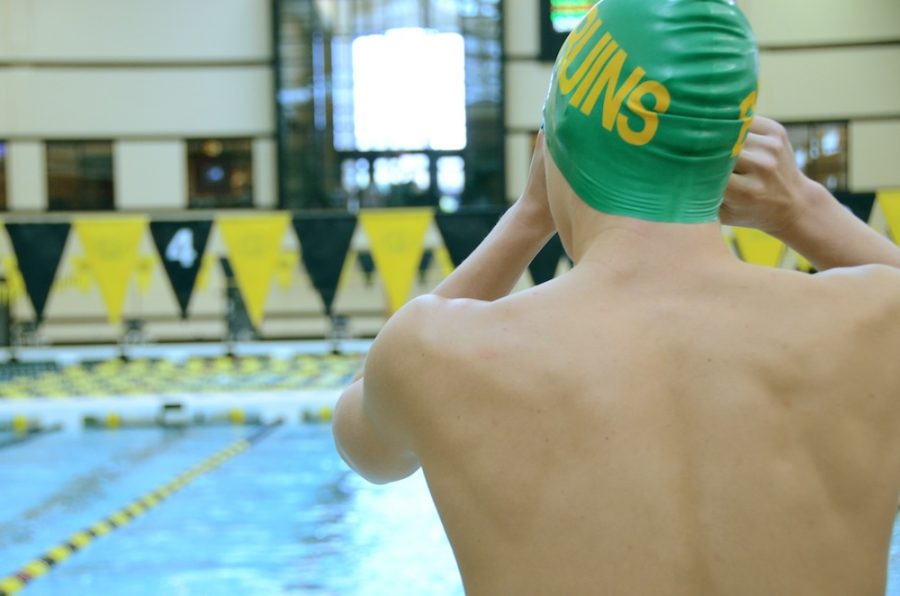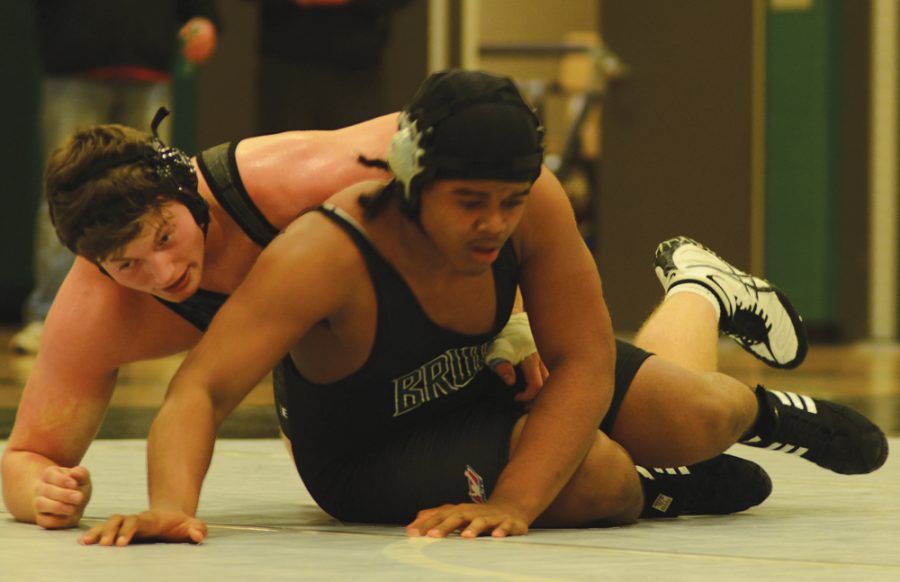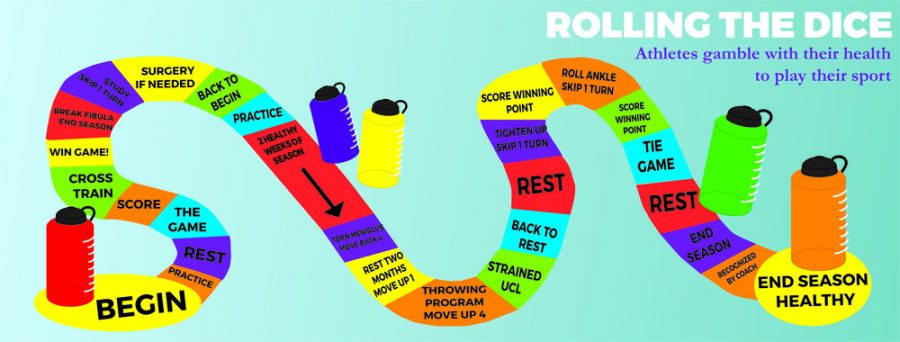It’s no wonder that a prestigious career in a professional sport is a dream for millions of teens across the globe. After all, the greatest athletes receive remarkable recognition and fame, immense annual salaries and, in some cases, a global fan base.
For a vast majority, however, these goals stand as nothing more than a piping dream. Statistics show that the average high school athlete will not become a professional athlete in their respective athletic activity. To put into perspective, the NCAA estimated that there are currently around 1,093,234 football players competing at the high school level. Only 6.5 percent will have the privilege to participate in college football, and only 1.6 percent of college football players in the NCAA will be drafted by the National Football League (NFL). This may come as a mental blow to many; however, there is much more to competitive athletics than many judge.
Behind the glitz and glamour so commonly displayed in the lore of professional athletics is the world which few speak of or even know about. It is a rather discrete world. Unlike the average teenager, aspiring professional athletes are almost solely focused on achieving their ultimate goal: earning a spot in a prestigious athletic league. Achieving this requires powerful sacrifice and intense mental will, traits not many adults, let alone teenagers, possess.
Eric Bean is a Certified Consultant with the Association for Applied Sports Psychology (AASP) and creator of “Get A Strong Mind”. Bean has worked with Division 1 and professional athletes from a wide array of sports. From his thorough experience with such elite athletes, Bean agrees that those aiming for a prestigious spot in a competitive sport possess fervent qualities which help them attain their final goal.
“Passion. Talent. They care more. They’re willing to get uncomfortable,” Bean said. “Most recreational athletes that are ‘good’ fear looking bad, so they don’t push themselves. They don’t challenge themselves to be great. Good is the enemy of great. Aspiring professional athletes are often more willing to go beyond their comfort zone in pursuit of being great.”
This passion serves as a key driving factor for aspiring athletes to put in unimaginable efforts to improve themselves in their respective sports. Senior swimmer Alex Tschopp, who is aiming to eventually attain an esteemed spot in Swiss Swimming, the national swim team of Switzerland.
“[Our] overall training is 20 hours a week,” Tschopp said. “We do doubles on Monday, Tuesday, Thursday and Friday with one practice on Wednesday and no practice on Sunday. We usually allocate that time with 17 hours of swimming, about 60,000 yards and two to four hours of on-land core and strength work.”
Tschopp believes that the numerous aspects of athleticism his swimming program incorporates, such as strength, endurance and speed, makes it of a much greater difficulty than regular fitness programs. He said that his swimming program pushes him to the absolute limit on a daily basis, something which he believes is not present in regular fitness programs.
Along with rough, taxing athletic workouts, many aspiring athletes make tough sacrifices in the emotional, social, and physical realm in order to reach their goals.
“A high school basketball player I am working with that has aspirations of going pro works out on his own at 5 a.m. most days a week,” Bean said. “He does basketball drills, weightlifting, etc. all on his own in addition to his team structured workouts. He takes his nutrition very seriously, he doesn’t go to parties, he doesn’t have much of a social life, he works on his mental game, he reads a lot, etc. etc. An outsider might look at this and say ‘Oh, he doesn’t have any balance in his life.’ And that may be true to most traditional definitions of balance, but to him, these ‘costs’ are worth it.”
Tschopp also constantly forfeits many aspects of the average teenager in order to be successful as a swimmer.
“Some of the hardest sacrifices I have to make are with sleep, and that goes with both not being able to stay up late and having to get up early,” Tschopp said. “Personally, it means not as much time for other hobbies and less time for school and relationships.”
While Tschopp believes that forgoing certain events is tough, they are trivial compared to what he believes is the most emotional sacrifice he needs to make every Christmas: cutting time with loved ones.
“The most emotional sacrifice I’ve made is not going to Switzerland to visit my family over Christmas anymore,” Tschopp said. “I used to go every year to visit them over Christmas, but we have our most intense time of training during that time of year, so I had to stop going.”
If athletes like Tschopp do happen to become professionals in their respective sports, their road still has many twists and turns ahead. In fact, for athletes, the road is far from over. Contrary to popular belief, professional athletes need to constantly improve and maintain themselves to remain professionals. Gunnar Peterson, a professional personal trainer who is certified by the National Strength and Conditioning Association (NSCA) and has trained several athletes in a vast multitude of professional leagues, as well as celebrities including Sylvester Stallone and Khloé Kardashian, said that professional athletic workouts are much more challenging than what an elite high school or college athlete might do.
“Usually, it’s the pace,” Peterson said. “When we sequence their movements, the pace that they keep is usually more relentless than somebody who is a casual exerciser. The rest intervals between the movements are reduced, and the way the movements are sequenced requires a large degree of cardiovascular fitness, combined with strength output. It’s challenging and demanding on the system.”
When performing on the field, professional athletes also need to deal with constant scrutiny and criticism, another challenging aspect of athletics which they face each day which Peterson believes many underrate.
“It’s illustrated every time you see sports fans watch a game,” Peterson said. “I’ve always heard people kibbutz about a football game. They’re like ‘he dropped that! Oh my god, he missed that! Jesus, how did he miss that?’ How did he miss what? The pass that was coming at him at 65 miles per hour while two guys were hitting him high and low? Oh, that pass? I don’t know, how do you think he dropped it? With 70,000 people yelling at him? Look, I get that pros are pros and they’re not supposed to mess up, but they have a human factor to them too.”
For those who truly desire to become elite athletes in the future, and are willing to make even the toughest sacrifices, Bean believes that the best recipe for success is a powerful reason for an athletic aspiration and dedication.
“Overcoming these setbacks is a combination of resiliency, psychological hardiness, luck, and determination,” Bean said.
Would you be willing to make sacrifices in order to accomplish an athletic or educational dream? Let us know in the comments below.
LATEST NEWS
- Stress, anxiety skyrocket as students prepare for upcoming AP tests
- RBHS holds successful night of percussion
- Not even water?
- Solar eclipse to pass through Missouri, April 8
- How CPS is organized: a guide
- City of Columbia to hold school board election April 2
- Youth Election Participants to assist in upcoming municipal election
- City of Columbia hosts first Community Engagement Session for McKinney Building, hopes to gain public insight on the structure’s future
- RBHS Track Team Opener at Battle Gallery
- March Mathness Photo Gallery
Path to professional sports is one bumpy ride
April 28, 2016
A RBHS swimmer prepares for a race at the MU Aquatic Center earlier this year. Swimming’s Last Chance meet and the state championships are today. Photo by Erin Kleekamp
Leave a Comment
More to Discover
@2021 - www.bearingnews.org

























































































